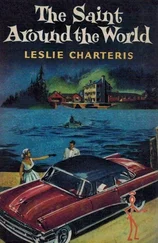Rick Spilman - Hell Around the Horn
Здесь есть возможность читать онлайн «Rick Spilman - Hell Around the Horn» весь текст электронной книги совершенно бесплатно (целиком полную версию без сокращений). В некоторых случаях можно слушать аудио, скачать через торрент в формате fb2 и присутствует краткое содержание. Жанр: Морские приключения, на английском языке. Описание произведения, (предисловие) а так же отзывы посетителей доступны на портале библиотеки ЛибКат.
- Название:Hell Around the Horn
- Автор:
- Жанр:
- Год:неизвестен
- ISBN:нет данных
- Рейтинг книги:4 / 5. Голосов: 1
-
Избранное:Добавить в избранное
- Отзывы:
-
Ваша оценка:
- 80
- 1
- 2
- 3
- 4
- 5
Hell Around the Horn: краткое содержание, описание и аннотация
Предлагаем к чтению аннотацию, описание, краткое содержание или предисловие (зависит от того, что написал сам автор книги «Hell Around the Horn»). Если вы не нашли необходимую информацию о книге — напишите в комментариях, мы постараемся отыскать её.
Lady Rebecca
Hell Around the Horn
Hell Around the Horn — читать онлайн бесплатно полную книгу (весь текст) целиком
Ниже представлен текст книги, разбитый по страницам. Система сохранения места последней прочитанной страницы, позволяет с удобством читать онлайн бесплатно книгу «Hell Around the Horn», без необходимости каждый раз заново искать на чём Вы остановились. Поставьте закладку, и сможете в любой момент перейти на страницу, на которой закончили чтение.
Интервал:
Закладка:
So, after the publication of the captain's recollection of the voyage, followed decades later by the apprentice's version, one might assume that the record was complete. But it was not the case.
In 1970, sixty-five years after the voyage, Alan Villiers, a square-rigger sailor, captain, shipowner, writer and documentarian, heard of a collection of ship's Articles and official logs stored in n large hanger at Hayes, Middlesex in Great Britain. The crates and crates of documents were about to be thrown away. Villiers examined the documents in the hangar and found what he described as a "treasure trove." There were hundreds and hundreds of logs from sailing ships and thousands from steamers. One of the logs that Villiers discovered was from the 1905 voyage of the British Isles .
Based on these newly discovered logs, Villers wrote, " The War with Cape Horn, " which focused on the particularly brutal winter of 1905. One of the logs that Villiers paid special attention to was that of the British Isles .
So why write a novel about a voyage that is so well documented? One reason is because the primary sources do not agree, one with the other. The remarkable thing about the three accounts of the voyage of the British Isles is how widely Captain Barker, Apprentice Jones and the official log disagree on key points. They did not for, example, even agree on how many had died during the voyage. The official log reported three deaths at sea, while Captain Barker reported four, and Apprentice Jones counted six. If we assume that the official log is accurate, then the two memoirs are, at least in part, each historical fiction. In the simplest terms, they are the stories that the story tellers wished to be told. Alan Villiers thought that both Captain Barker and Apprentice Jones may have revealed more about themselves than they had intended. (Villiers was not an admirer of Captain Barker.)
Beyond the differences detailed in three accounts, what I found particularly interesting as a writer, were the differences in perspective. The ship, as seen through the eyes of the captain and a first voyage apprentice, is a very different place. I decided to write a novel of the fictional Lady Rebecca as seen through the eyes of the captain and an apprentice but also, as seen by an American sailor before the mast and by the captain's long-suffering wife. In doing so, I hoped to capture a more complete picture of the remarkable individuals who sailed on a beautiful, if often dangerous ship, attempting to round the merciless Cape of Storms in the middle of the winter. I will leave it to the reader to judge whether or not I've succeeded.
The British Isles, and her fictional sister the Lady Rebecca , were struck by a rogue wave in 1905. Rogue waves are typically two to four times taller than the other waves on the sea and seem to appear from nowhere, often coming from a direction counter to that of the wind or current. They can be up to one hundred feet high and are usually far steeper than a normal wave. These waves can indeed be ship killers, sinking modern ships far larger than any windjammer.
Perhaps the most remarkable thing about rogue waves is that until quite recently, oceanographers and even many ship's captains claimed that they did not exist. The surviving captains of ships struck by rogue waves were dismissed as exaggerating, telling sea stories, or for seeking an excuse for their own failings in preparing their ship for a storm at sea.
Oceanographers had a good reason to dismiss the existence of rogue waves. They had a very functional mathematical model for waves and sea states that agreed quite closely with observations at sea. The model worked. There were no rogue waves predicted by the model, therefore there were no rogue waves.
Even sea captains could be skeptical. Alan Villiers who had sailed before the mast and as ship's captain of square-riggers around Cape Horn, comments in his book, The War With Cape Horn , "It is strange that the ship [the British Isles] was so much damaged from her brush with the Horn. She was in the area for ten weeks which is at least seven longer than enough, but she was strongly built to take that sort of punishment indefinitely.”
What she was not built for, however, was to be struck by a rushing vertical wall of water the size of a ten story building.
From the standpoint of the scientific community, rogue waves only came into existence on January 1, 1995 on the Draupner drilling platform in the North Sea off Scotland. The platform was hit by an unusually high and steep wave. What was different this time, however, was that there was a downwards-pointing laser sensor installed on the drill rig, which accurately measured and documented the wave heights. In one night, the mythical wave was captured in a form that scientists could accept. We now understand that rogue waves do indeed exist and they look just like the wave described by Captain Barker that nearly sank his ship.
The British Isles did informally race the German windjammer Susanna from Wales to Chile. (The actual ship's name was spelled Susanna. Captain Barker, however, spelled it with an ending "h," which I have continued to do in the novel.) Despite the difficult passage, the British Isles (and Lady Rebecca) beat the German windjammer to port. In his memoir, Captain Barker thought that the captain of the German ship had given up in the attempt to round the horn to the west and had turned and run before the wind instead. He wrote, "the Susannah ran her easting down, rounded Australia, sailed over a vast expanse of storm racked Pacific Ocean, and finally arrived in port in Iquique after a passage of two hundred and seven days.”
Given the length of the passage, the explanation is not implausible. Nevertheless, Captain Barker had it wrong. The captain on the actual Susanna had a faulty chronometer which indicated that he was father east than he actually was, so they kept sailing west, farther and farther into the Pacific Ocean until the captain finally turned north. He had sailed almost 500 miles farther to the west than he needed to, and therefore, when he turned east toward Chile, had to sail back an additional five hundred miles. The Susanna holds the unenviable record for the longest passage around Cape Horn in history. Despite the lengthy passage, however, the ship arrived in port without significant damage or any loss of life.
Faulkner wrote, "The past is not dead. It isn't even past." The days of the windjammers seem a long way away. We will never again see ships that sail without engines or electricity, that are wholly out of touch with the world once their t'gallants sank below the horizon and that sail the vast oceans powered only by the wind and the brawn of sailors setting and trimming the sails. Nevertheless, the windjammers are not entirely gone. Close to a dozen of the original ships remain as museum ships around the world and several are still actively sailing. The Padua , one of the last Laeisz Flying P-line ships, is sailing as the Kruzenshtern , a Russian flag school ship, as is the sail training ship Sedov , originally the Magdalene Vinnen II . Add in the dozens of sail training ships of various ages and the few sailing cruise ships and there are still square sails on the vast oceans, despite the exaggerated rumors of their demise.
Beyond the ships themselves, I came across a more personal connection to Captain Barker recently. Once a month, a group of folks from around New York City who love the music of the sea get together to sing sea shanties. The get-together is informal but has the rather grand title of the "William Main Doerflinger Memorial Sea Shanty Session" at the Noble Maritime Museum in Building D at the Snug Harbor Cultural Center in Staten Island, New York. I attend whenever I can, which recently has been somewhat infrequently.
Читать дальшеИнтервал:
Закладка:
Похожие книги на «Hell Around the Horn»
Представляем Вашему вниманию похожие книги на «Hell Around the Horn» списком для выбора. Мы отобрали схожую по названию и смыслу литературу в надежде предоставить читателям больше вариантов отыскать новые, интересные, ещё непрочитанные произведения.
Обсуждение, отзывы о книге «Hell Around the Horn» и просто собственные мнения читателей. Оставьте ваши комментарии, напишите, что Вы думаете о произведении, его смысле или главных героях. Укажите что конкретно понравилось, а что нет, и почему Вы так считаете.












